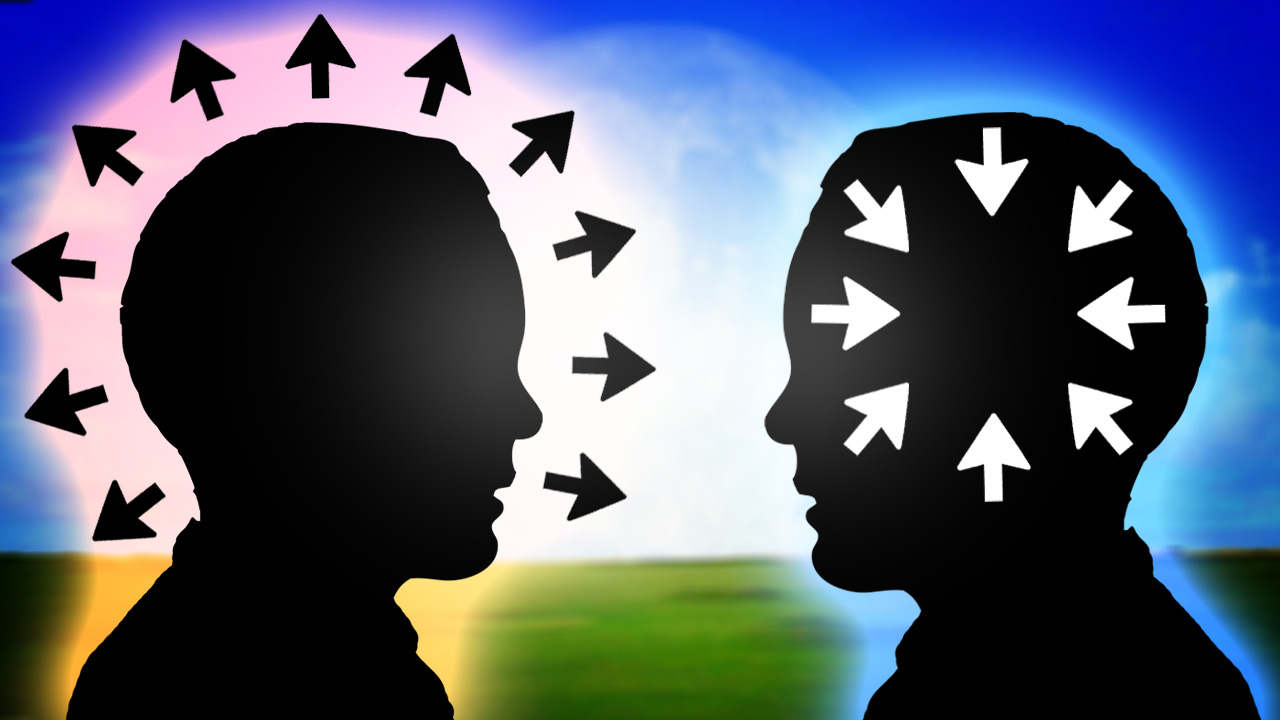
Extraversion is one of the five personality traits of the Big Five personality theory. It indicates how outgoing and social a person is. This factor has two familiar ends of its spectrum: extroversion and introversion. It concerns where an individual draws their energy from and how they interact with others. In general, extroverts draw energy from or recharge by interacting with others, while introverts get tired from interacting with others and replenish their energy with solitude.
People who are high in extroversion tend to seek out social stimulation and opportunities to engage with others. These individuals are often described as being full of life, energy, and positivity. In group situations, they are likely to talk often and assert themselves.
Introverts are people who are low in extroversion. They tend to be quiet, reserved and less involved in social situations.
Characteristics of extraversion and introversion
| Extraversion | Introversion |
|---|---|
| Talkative | Quiet |
| Sociable | Reserved |
| Outgoing | Shy |
| Lively | Silent |
| Optimist | Passive |
| Touchy | Reliable |
| Active | Calm |
| Assertive | Rigid |
High levels of extroversion can be particularly well suited to jobs that require a great deal of interaction with other people. Teaching, sales, marketing, public relations, and politics are all jobs in which an extrovert might do well. Introverts prefer less social interaction so jobs that require lots of independent work are often ideal.





